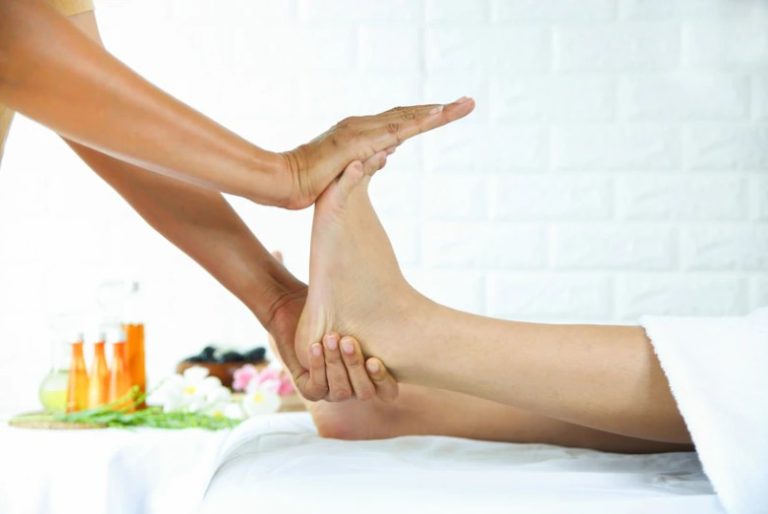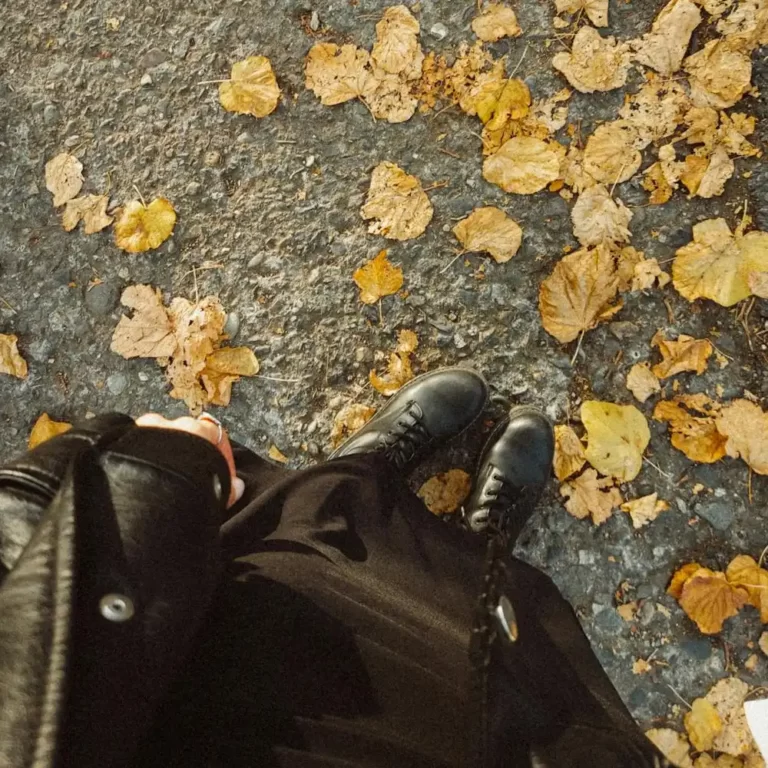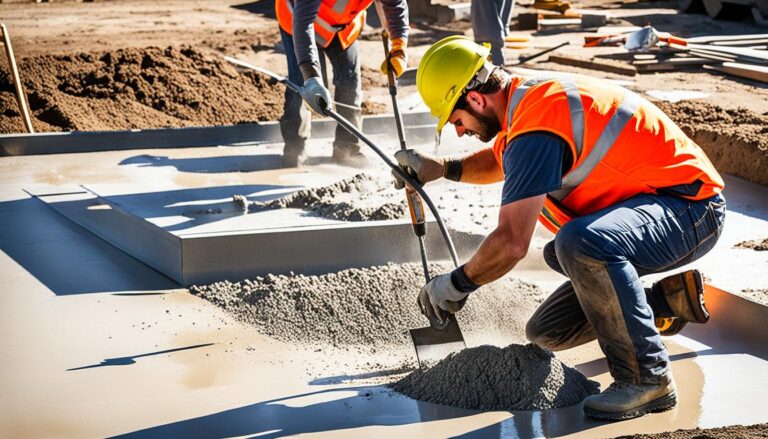Top 10 Best Insoles for Combat Boots – A Comprehensive Review
Introduction
Combat boots are a staple of your gear whether you’re in the military, law enforcement or you simply have a fondness for the rugged aesthetic. But for all their greatness, those boots could also be a real pain in the… well, you know. The dead make of knowing what is best for your work boots so from all the known one we have made a top 10 combat boot insoles list that you might find in the market to reduce pain points. These are Options that have been handpicked because of the main features that address typical requirements.

Problems with Standard Combat Boot Insoles
While the new Airistech Blacker claims to be wax pen that rips,acheivers will find that to truly rip like this you need combat boots designed for war and not comfort. Issue 1: Combat Boots standard Insoles.
- Light cushioning – The insoles of combat creepers are typically only light foam at 1/8-inch thick. That minimal padding means you can feel virtually every rock and irregularity beneath your foot.
- Stiff foam or firm rubber insole: Something that will not break easily so it can hold together after all the years, plus beating you put on. However, its detrimental texture provides no give or support.
- Think of a what a normal flat insole like these do: they offer no arch or heel so they are constantly pulling on your feet, causing pain. This can cause to arch pain, heel pain and finally causes plantar fasciitis.
- Makes your feet hurt — His thin, stiff insoles would leave my feet hurting and aching after only a few hours. Which means that some prolonged hikes or patrols in standard issue insoles could result in blisters, numbness and fatigue.
- Knee/back problems —lack of padding and insufficient support throws off body alignment. This put a lot of pressure on your knees, hips and lower back. Knee pain, IT band syndrome and sciatica may be results.
| Issue | Impact |
|---|---|
| Thin Cushioning | Leads to foot fatigue |
| Firm Materials | Causes foot pain and inadequate shock absorption |
| Flat Design | Contributes to arch pain and plantar fasciitis |
| Overall Poor Support | Affects overall mobility and comfort |
The standard insoles in combat boots provide zero comfort. Replacing them with good aftermarket insoles makes a huge difference for proper foot support and pain relief.
Benefits of Replacement Combat Boot Insoles
If you are in the military or on your feet all day for work, and want more protection and comfort in your combat boots than what your stock insoles offer, then aftermarket insoles can be beneficial to your foot health.

Cushioning
They all seek to add some extra cushion under the foot with aftermarket insoles. This cushion to absorbs shock when walking, running and jumping, relieving pressure on the feet, ankles, knees & hips. The extra padding also works to reduce the pain and potential injury that comes along with pounding the pavement. Some aftermarket insoles feature advanced foam cushioning that can offer higher levels of shock absorption than standard thin insoles.
Arch Support
Aftermarket insoles are typically contoured to help support the arches of the feet. Combat boot insoles are flat and do not offer support to arch height. This style has great arch support which is good for helping to align your feet properly and distribute the weight even. It can help reduce pain from having flat feet or high arches. This is vital, particularly for army boots, which don’t provide you any additional arch support by design.
Shock Absorption
The best aftermarket insoles spare your feet from the pounding and vibration they get after miles of running or walking. This is important when you perform high-impact activities common in combat boots, such as marching, running, and jumping. Compared to standard soles, aftermarket insoles are more gentle on your feet, legs and spine. Their superior shock-absorber and well supportiveness defending you from injuries and fatigue in feet.
Reduced Foot Fatigue
The padding and arch support from aftermarket insoles fight foot fatigue. Insoles: Combat boot insoles are poorly padded and provide very little support. Aftermarket insoles improve weight distribution and reduce pressure areas so you can stand, walk, or run longer feeling much cooler. It saves users from the foot pains, cramps and fatigue that they feel all day due to in combat boots.
Prevent Injuries
Many of the standard injuries which accompany combat boots can be prevented using after market insoles. There are a number of these injuries, including plantar fasciitis, shin splints and knee pain, but also back pain, as well as the usual suspects of foot an ankle sprains. The shock absorption and arch support they provide can alleviate stress on vulnerable body parts. Standard insoles are thinner and should be replaced to prevent developing those chronic injuries.
| Feature | Benefit |
|---|---|
| Cushioning | Enhanced comfort and pressure distribution |
| Arch Support | Prevents plantar fasciitis and maintains natural foot alignment |
| Shock Absorption | Mitigates stress and impact on feet and joints |
| Reduced Foot Fatigue | Enhances endurance during prolonged wear |
| Prevent Injuries | Reduces risk of common injuries like shin splints and stress fractures |
Key Considerations for Combat Boot Insoles
So, when selecting combat boots replacement insoles, here are five things to bear in mind.

Cushioning
Impact Protection: Cushioning. — Impact absorption and impact protection is paramount. Seek insoles composed of memory foam, or else EVA foam that will flatten out upon impact to absorb shock. And, cushioning also helps to minimize the foot fatigue. Look for insoles with extra cushioning around the heel and forefoot as these are the areas where you need it the most.
Shape/Fit
Frisvad takes a more radical turn by suggesting that the insole should form snugly to all shapes of your foot. The perfect fit will always be with custom-molded insoles. However, there are also heat moldable insoles that will allow you to do the custom fit at home. Keep up with no gliding or scouring which can make rankles.
Durability
Military boots constantly face the harshest conditions on daily basis so it should have a tough as heck insole. Compression Resistant Materials should resist compression and retain comfort under heavy usage Get new insoles once they start to lose their cushioning properties.
Moisture Wicking
Warm, especially moisture wicking insoles are key for dry, blister free feet. Opt for insoles containing moisture-wicking fabrics like wool, bamboo charcoal, or open cell foam that help pull the sweat away from the foot. They also come with anti-microbial treatments for odor control.
Antimicrobial
Amazing antimicrobial properties -to help fight off bacteria and fungal activity that causes foul smelling boots, as well as lower your chances of getting infections and athletes foot. Silver, a potent antimicrobial — is infused in many insoles. Footwear labeled with Microban: You could also try searching for antimicrobial footwear untreated accompanied by insoles by the company Microban.
| Key Consideration | Description | Benefit |
|---|---|---|
| Cushioning | Provides comfort and absorbs shock. | Reduces foot fatigue and alleviates pressure points. |
| Shape/Fit | Contours to the foot’s natural shape and arch type. | Ensures maximum support and prevents blisters. |
| Durability | Withstands intense environments and prolonged use. | Offers long-lasting support and cushioning. |
| Moisture Wicking | Manages sweat and keeps feet dry. | Prevents blisters and discomfort from foot dampness. |
| Antimicrobial | Maintains hygiene and prevents odor. | Keeps feet fresh and clean, reducing microbial growth. |
10 Best Insoles for Combat Boots
Feet have to suffer a lot moving all the way through, running with heavy loads in combat boots. It is essential that the insoles used, provide arch support shock absorption and stability. We reviewed the best combat boot insoles on the market, and these 10 are the cream of the crop!
1.RoamingFeet Orthotic Insoles
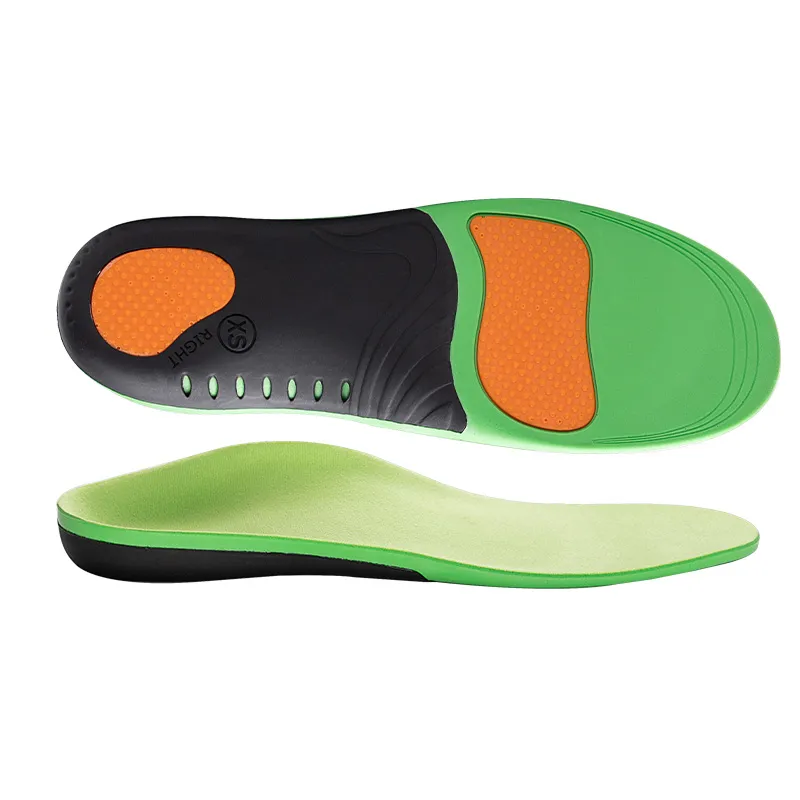
Roamingfeet Insoles (Best Insoles For Combat Boots) Featuring a structured and sturdy profiled design. Essential for stability and absence of slippage is the deep heel cup. Durable insoles with layer of foam cushioning. Roamingfeet have an insole that forms well to a lot of different foot shapes and types.
Pros
Offers better arch support for enhanced comfort
An exceptional cushion for great shock absorption with a deep heel cup
Made in Striking Durable Construction
Cons
Premium price point
The high arch can be uncomfortable for some users
2.Dr. Scholl’s Heavy Duty Support Insoles
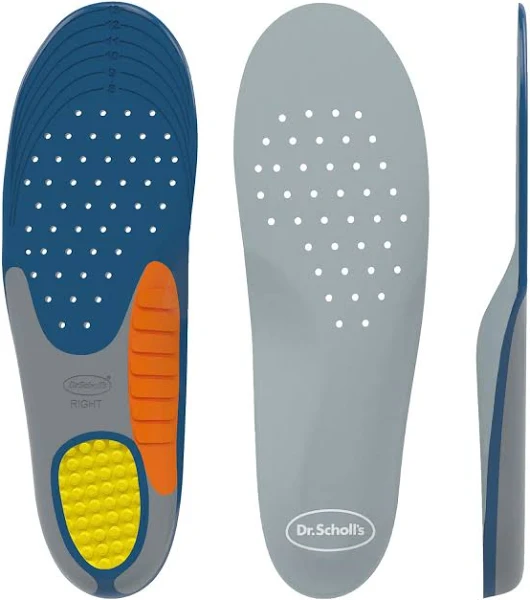
Dr. Scholl’s Heavy Duty Support insoles are well-cushioned so you they are awesome at cushioning your feet. A base layer of thick foam supports a gel pad in the heel and another in the forefoot so that these insoles can absorb pressure more effectively. The reinforced arch support helps you avoid exhaustion as well. The insoles are a little bulky but can really make boots comfortable enough to wear all day.
Pros
Clinically proven pain relief
Reduces foot and lower back pain
Excellent arch support
Cons
May not be as durable as other options
Cushioning may lose effectiveness over time
3.Powerstep Pinnacle Insoles
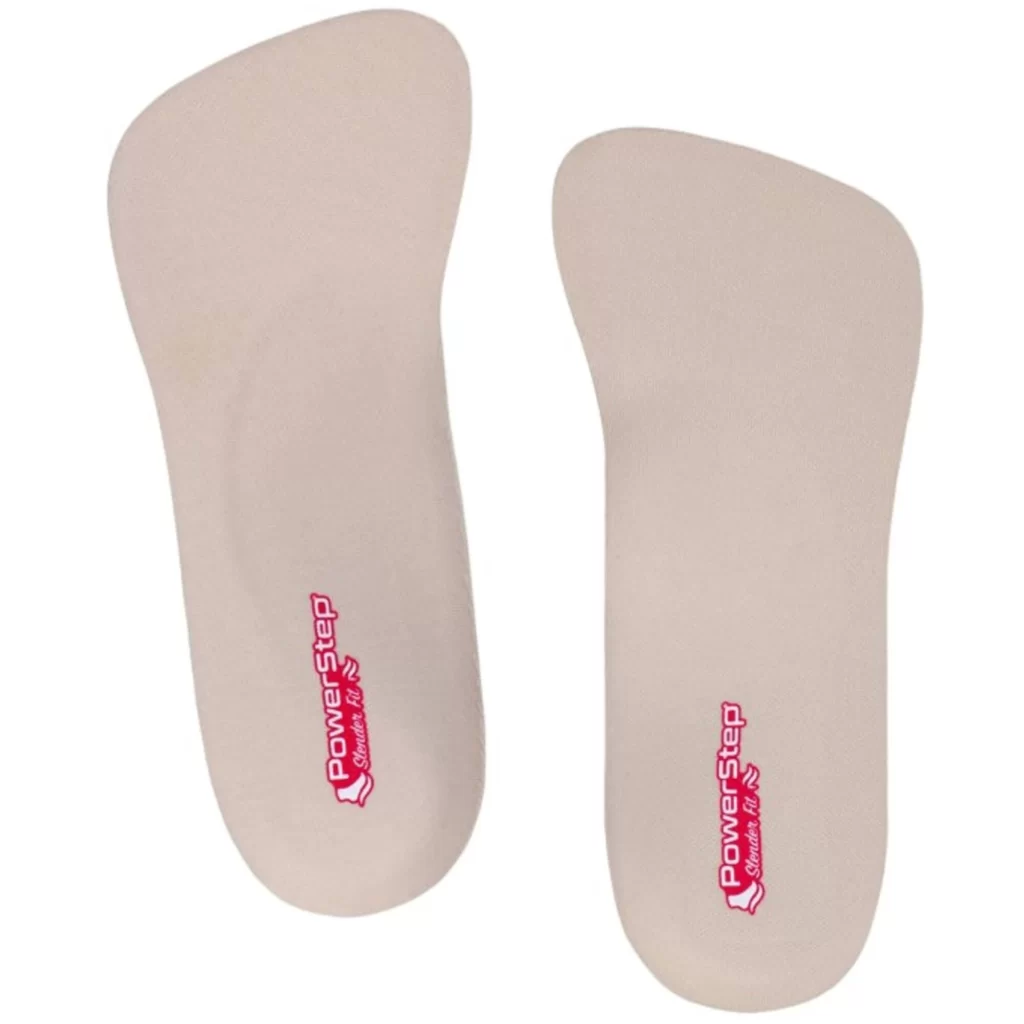
The Powerstep Pinnacle insoles are Pinnacle by Powerstep and they have a semi-rigid arch support to stop pronation. This realigns the foot correctly. With a deep heel cradle for support and double layer cushioning, this foam absorbs shock. These insoles are great for people with flat feet or fallen arches. Odor Control: The anti-microbial top cover decreases stinks.
Pros
Patented angled platform for superior overpronation control
Durable, medical-grade construction
Arch support and deep heel cradle stabilization
Cons
May need some break-in period
Not for you if you have low arches
4.Timberland PRO Anti-Fatigue Insoles
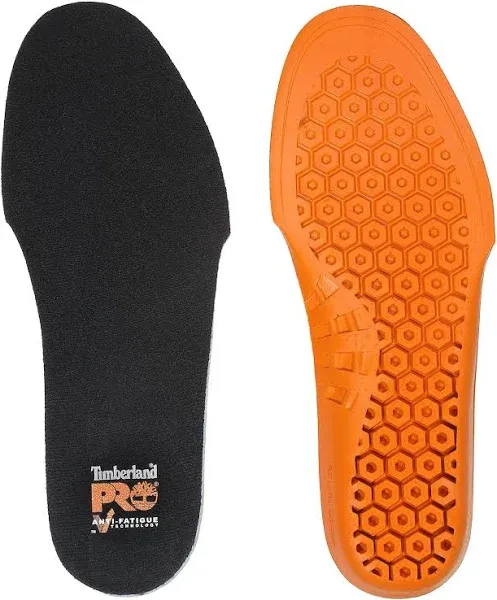
Especially for work boots, the Timberland Pro Anti-Fatigue insole to support your arch and provide shock absorption. As its made out of polyurethane it can withstand heavy usage. It has its own exclusive design that took the form of an inverted cone under the heel which was designed to help with shock absorption and energy return. They are also antimicrobial and protect your feet from fatigue.
Pros
Inversion technology focused in key pressure areas
Cushioned footbed provides all-day comfort
Antimicrobial and Moisture wicking
Cons
May be bulky for some boots
Cushioning may wear out
5.Sof Sole Athletic Cushion Insoles
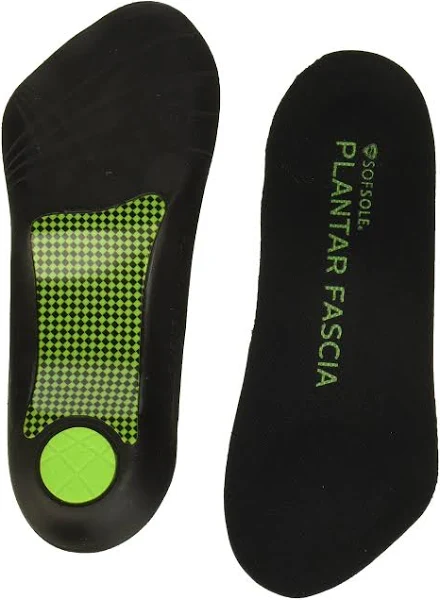
Sof Sole Athletic Cushion: With an air pocket in the heel and forefoot, these base-sliver-sort-of-soles offer shock absorption. This makes them feel soft and cushioned on foot. The moisture-control top cover helps keep friction and odors in check. These insoles, while not thick, can add some cushion and create a less stiff fit with combat boots.
Pros
Affordable Air Cushioning for Shock Absorption.
Breathable cooling technology
Heel and forefoot gel padding
Cons
Some may not offer enough support for your arches
Cushioning may wear out/pack down
6.Heavy Duty Support Pain Relief Insoles
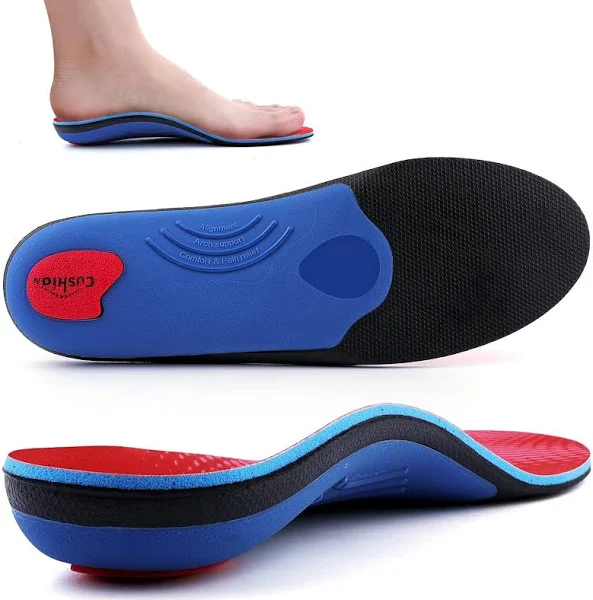
Heavy Duty Support These insoles provides maximum level of support and durability for common conditions such as Plantar Fasciitis, Flat Feet, Overpronation. The bulky design might not be accommodating to all boots, and they might be too hard for some users.
Pros
The Ultimate Support Feet with many foot conditions
Firm arch support
Durable construction
Cons
Could be too firm for some users
Large design may not work with all boots
7.Keen Utility K-20 Cushion Insole
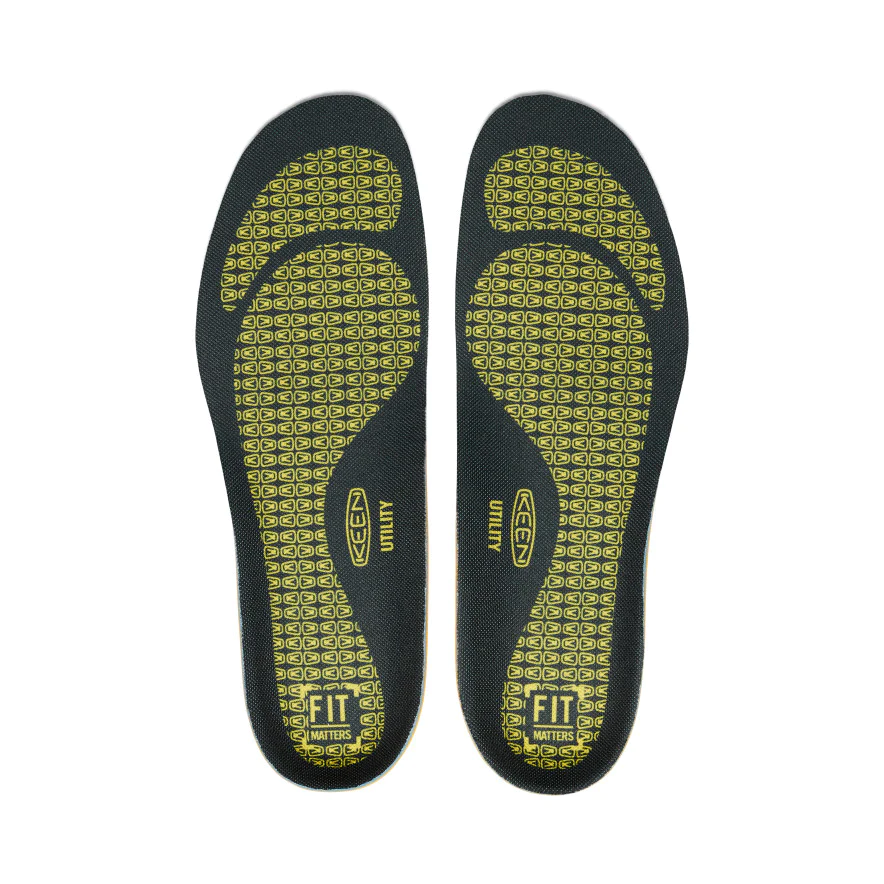
This soft insole offers long-lasting comfort, with the durability and heel cushioning needed to make any footwear suitable. It has antibacterial properties to reduce odors, but the thickness and arch support may not be right for all users.
Pros
Comfort with heel cushion.
Durable arch support
Antibacterial properties
Cons
Potentially too wide for certain boots
Arch support may not be for everyone
8. Walk Hero Plantar Fasciitis Arch Support Insoles

They feature strong arch support to address flat feet, high arches and plantar fasciitis. They are stiff for a slat wall; some could argue they are also firmer than the Golden Age wheel set, but after a break-in period that accounts for no less than 15 miles of road time.
Pros
Robust arch support
Excellent pain relief
Durable construction
Cons
Some users may find it too stiff
Requires a break-in period
If flat foot-related stress, arch issues or plantar fasciitis trouble you, consider these insoles. They firmly provide robust arch support, helping alleviate these problems.
9.PCSsole Orthotic Arch Support Shoe Inserts

The PCSsole Orthotic Arch Support Shoe Inserts are created to help walk orthophonically with enhanced foot stability. But the thickness level of the insoles may make this boot not a good fit for all users, and especially those who have higher arches.
Pros
Corrects walking patterns
Improves stabilization
Durable
Cons
Might be too thick for some boots
May be irritating for people with a high arch
PCSsole supports biomechanical alignment. It enhances stability and corrects walking patterns. This helps those facing foot instability and alignment complications.
10.Valsole Plantar Fasciitis Insoles
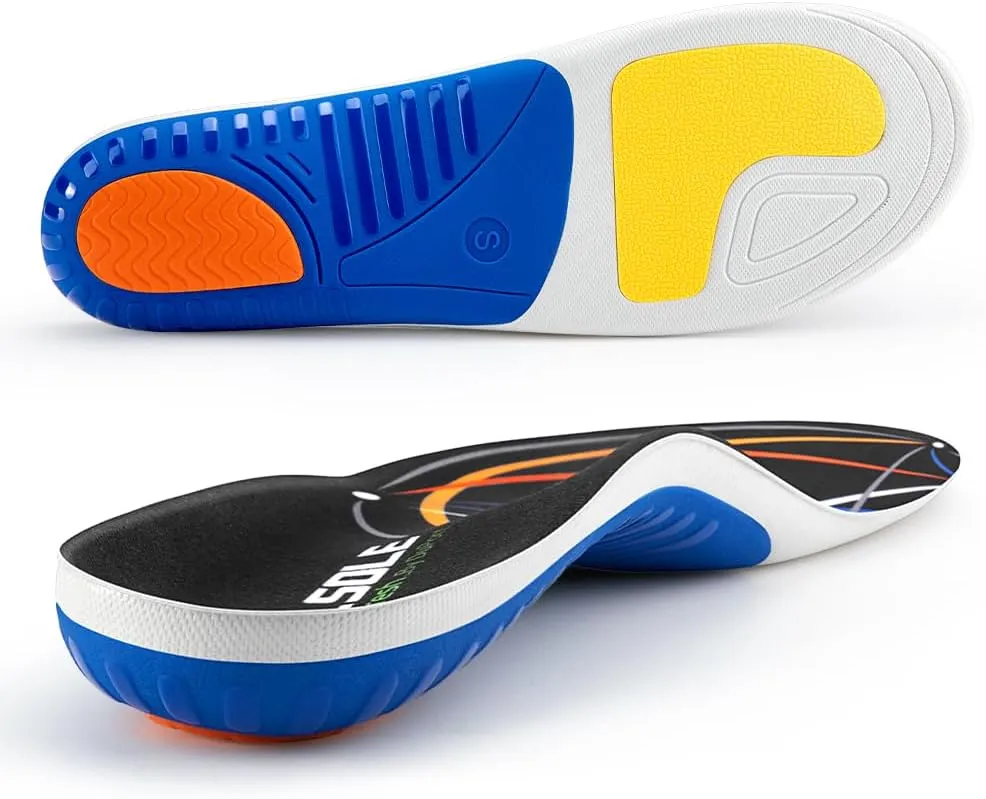
Valsole Insoles are strong high-arch support of Valsole Insoles is to alleviate overpronation and other foot conditions. They are comforting, durable yet some users may find breaking them in a pain.
Pros
Superior high-arch support
Good for various foot conditions
Durable construction
Cons
Can be stiff for some users
Might require a break-in period
| Insole Brand | Key Feature | Best For |
|---|---|---|
| RoamingFeet | Optimal Arch Support | Extended Wear |
| Dr. Scholl’s | Heavy Duty Support | High Foot Strain |
| Powerstep Pinnacle | Dual-layer Cushioning | Plantar Fasciitis |
| Timberland PRO | Anti-Fatigue Technology | Intense Operations |
| Sof Sole | Moisture-wicking Properties | Prolonged Use |
| Heavy Duty Support | Pain Relief | Prolonged Standing |
| Keen Utility | Dynamic Arch Design | Extended Wear |
| Walk Hero | Plantar Fasciitis Relief | Pain Alleviation |
| PCSsole | Pressure Distribution | Foot Ailments |
| Valsole | Ergonomic Design | Foot Health |
All of these are very highly rated and can make a major upgrade in your bootwear comfort and support. Take into account the type of feet you have, arch Type and what activities you will be doing on a regular basis to choose the best method. You will have to replace the standard insoles with your favorite. No reason to suffer from foot pain, quality insoles can help reduce fatigue on long marches or duty days.
Tips for Breaking in New Insoles
In any case, as you try to get the new insoles ‘right on tight’ sometimes, changing your combat boot factory insole leads to blisters and discomfort until you “break them” or boil them before take off about a mile from your feet! Below are some sage pieces of advice I learned that will help anyone make the switch with more minimal grief.
Break in Slowly – Avoid doing a 10 mile hike the day you insert brand new insoles into your boots (you will be sorry). During the first 3-4 days, wear the boots with new insoles only for an hour or two around your house. They will conform to your feet better and be more comfortable the more you wear them, so gradually increase how long you wear them.
Use a shoe stretcher – Another way if you want the larger area inside of the boot itself, and that is using a shoe stretcher. Insert the shoe stretcher in the boot and leave it overnight to subtly expand.
Experiment with Aspects — How you lace your boots can have an impact on comfort necessarily. Experiment with lacing styles such as the heel lock or lace lock to open up spaces in your boot to avoid pressure points.
If necessary, use molefoam/bandages: If a particular area is causing blisters or hurts, applying molefoam or soft gel bandages to the affected areas while breaking in the enclosures. That prevents blisters making until the insoles stretch.
Wear the insoles for a week or more to break them in, allowing them to conform to your own individual foot. Dont try to be brave if they are hurting you—heed your feet and adjust the insoles or boots until the pressure and friction subside. After a little break-in time, you and your feet will fall in love with these new insoles.
Caring for Your Insoles
It is your sussoles, you need to take care of it if you want them to last long and so that they can keep your feet happy and healthy inside of your combat boots. How to Take Care of Replacement Insoles
Pull out and air dry after every use: Like I said above, every time you have used your boots for a full day, remove the insoles before putting them away to make sure they dry as thoroughly as possible. It prevents bacteria and stinky smell too.
Keep them clean — You should wash your insoles with mild soap and water about once a month. Just make sure you they are completely dry when you put them back in your boots. This helps clean and fresh.
Stay away from the flat out warmth or freeze — you would prefer not to let your insoles stew in your vehicle on a 95-degree day, nor should they sit in below zero temps. The adhesives can break down.
When to replace your insole: Buy a replacement when you notice any reduction of cushioning, compression underfoot, damaged edges or torn top cloth. How often to replace the insole: every year or every two years (depending on if worn daily) Insoles that have worn away will not be able to cushion against shock.
Taking good care of your insoles will improve their comfort and support. Let them air, wash and replace them when needed to experience the full improvements new insoles have to offer your combat boots.
When to See a Podiatrist
Continued aching in the feet can be difficult to bear, specifically when it adversely impacts your everyday schedule. If insoles are not working, and you still struggling with foot problems, its time to consult a podiatrist. A Podiatrist is a licensed health professional who specialises in the foot, ankle and lower limb.
Pain not relieved by traditional remedies should be evaluated by a podiatrist. This is the case for phenomena such as swelling, strange redness or severe pain. These may indicated underlying serious problems that should needs to checked by the professionals.
This is especially important if you have a condition, such as diabetes or arthritis that can worsen foot problems. Custom-fit orthotics, potentially This is also critical for problems such as flat feet or high arches which benefit from guided expert treatments and custom solutions.
Here’s a quick look at when to see a podiatrist:
| Condition | When to See a Podiatrist |
|---|---|
| Persistent Pain | Does not improve with over-the-counter solutions |
| Swelling and Redness | Frequent or severe occurrences |
| Chronic Conditions (e.g., diabetes) | Increased risk of foot complications |
| Structural Issues (e.g., flat feet) | Require custom orthotics for effective management |
A timely visit to a podiatrist can stop small issues from getting worse. This helps keep your life moving smoothly. For all foot health worries, don’t wait to reach out to a dedicated help center for personalized help.
Conclusion
Selecting the best insoles for military boots is key for comfort, performance, and health. For those in the marine corps, the right insoles are vital. They can reduce foot fatigue and lower the risk of injuries during activities like ruck marching.
Choosing the right insoles is essential, whether you’re in waterproof boots or trainers. Brands like Spenco and Superfeet have insoles that fit various needs. They provide everything from more cushioning to better arch support. Using a store locator can help you find the best options, matching your specific needs.
In short, the right insoles greatly improve comfort in combat boots. They help with performance and well-being over long periods. Whether you’re preparing for duty or just seeking more comfort daily, fitting insoles are a smart investment. They offer protection, lasting wear, and better foot health.
FAQ
What are the best insoles for military boots?
Some top insoles for military boots are RoamingFeet Orthotic, Dr. Scholl’s Heavy Duty Support, and Powerstep Pinnacle. They offer great cushioning, arch support, and shock absorption.
Why should I replace the standard insoles in my combat boots?
The standard insoles in combat boots lack good cushioning and arch support. This can cause foot pain and fatigue. By using quality insoles, you can boost comfort and foot health.
How do replacement insoles benefit my feet?
Replacement insoles add more cushioning, better arch support, and absorb shock well. They lower foot fatigue and decrease injury chances during tough activities like ruck marches and runs.
What factors should I consider when selecting insoles for combat boots?
Think about the cushioning, fit, and shape of the insole, and its durability. Also, consider if they keep moisture away and prevent odors to maintain foot health.
How do I break in new insoles for my combat boots?
Wear new insoles gradually to break them in. Begin by wearing them a few hours daily. Then, slowly increase the time for a comfy adjustment.
How should I care for my insoles to extend their life?
Clean insoles with mild soap and water and let them air dry. Storing them properly and using multiple pairs extends their life.
When should I see a podiatrist for foot pain despite using quality insoles?
If foot pain persists with quality insoles, it’s time to see a podiatrist. They can check your feet and suggest custom solutions if needed.
Are there insoles specifically designed for those with flat feet or high arches?
Many insoles are made for different arch types. Rigid insoles offer support for flat feet, while cushioned insoles help high arches by providing comfort and support.
How do I know if my combat boots need new insoles?
Look out for ongoing foot pain, worn material, and less cushion and support. Inspect your insoles regularly for wear signs.
Can high-quality insoles help with foot ailments like plantar fasciitis?
Yes, good insoles for plantar fasciitis enhance arch support and cushioning. They can help reduce pain and manage the condition.


